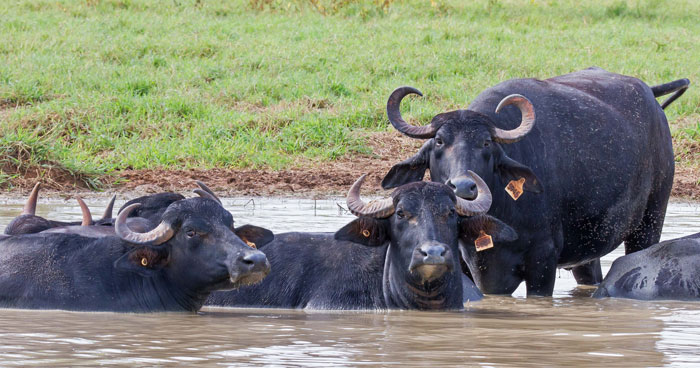
New crops and livestock are always a concern to the Invasive Species Council because they sometimes spawn pest problems. Australia has an exploding deer population largely because deer farming in its heyday was over-hyped, resulting in landholders establishing deer farms that failed, leading to many releases and escapes of deer, and sales of cheap deer to hunters who then freed them.
We have been concerned about the role played in this process by the Australian Government’s Rural Industries Research and Development Corporation. RIRDC contributed to today’s deer problems by publishing an overly optimistic report in 1999: Development of the Deer Industry as a Major Australian Livestock Industry. Deer never became a major livestock industry.
The corporation promoted the farming of Australian yabbies, marron and redclaw crayfish, three species that have now formed feral populations outside their native ranges, two of which pose major threats to endangered crayfish.
We were very critical of its 2010 report on giant reed (Arundo donax). Of all plants promoted as a biofuel giant reed is the weediest, and yet the corporation’s report placed it ‘in the premium group of crops for biomass yields’.
We also voiced concern about a 2010 RIRDC report promoting dates – it failed to mention that these are aggressive weeds in Western Australia’s Millstream-Chichester and other national parks.
Yet another RIRDC report, Evaluating Biodiesel Potential of Australian Native and Naturalised Plant Species, recommended growing weeds such as Mexican poppy (Argemone mexicana) and castor oil (Ricinus communis). It said their use ‘may be resisted by environmental groups’ but this should not discount their use. Of Mexican poppy, a serious crop weed, it conceded that ‘its cultivation, if any, requires careful weed management.’
Caution urged
In 2010 we wrote to the corporation urging it to ‘develop a policy on invasive species with the goal of ensuring that new rural industries or expansion of existing industries fostered by RIRDC do not add to Australia’s invasive species’ burden’.
The following year RIRDC announced that it would develop a risk assessment framework to inform research and funding. In March 2012 the corporation launched its framework, saying in a press release that this ‘will play an important role in helping prevent the introduction of new pests and weeds in Australia’. We commended RIRDC for this development.
But in revisiting this issue more than five years later, we can find no mention of risk assessment in any RIRDC publications. It is not mentioned in recent reports promoting the farming of red bayberry (Myrica rubra), mume (Prunus mume), Chinese jujube (Ziziphus jujuba) and water buffalo.
For the first two plants a risk assessment would probably have concluded that any future weed problem was unlikely, but for Chinese jujube and water buffalo the situation is different. Chinese jujube is closely related to a major weed, Chinese apple (Z. mauritiana) and there is some evidence of it spreading overseas. It is exactly the kind of plant that justifies proper risk assessment to decide if cultivation in some regions or situations should be avoided.
Water buffalo farms pose a high risk of generating pest problems in north Queensland and the Kimberley, and a very detailed assessment of risks should have been undertaken.
In late August we wrote to AgriFutures Australia, the new trading name for RIRDC, asking about use of their risk assessment framework.
The managing director, John Harvey, said in his reply that the corporation was using its risk framework, but that its projects on Chinese jujubes and water buffalo began before risk assessment was introduced. He did not explain why risk assessments are missing from the reports on red bayberry and mume.
Inclusion of risk assessments in the four reports would have shown that AgriFutures Australia is operating responsibly, and would have provided guidance to readers wanting to avoid contributing to weed and pest problems. The lack of evidence that red bayberry and mume are weedy is not a reason to omit assessments of these species.
We have written back to John Harvey asking for information about which species have been assessed since the framework was introduced in 2012 and the outcomes of the assessments.

